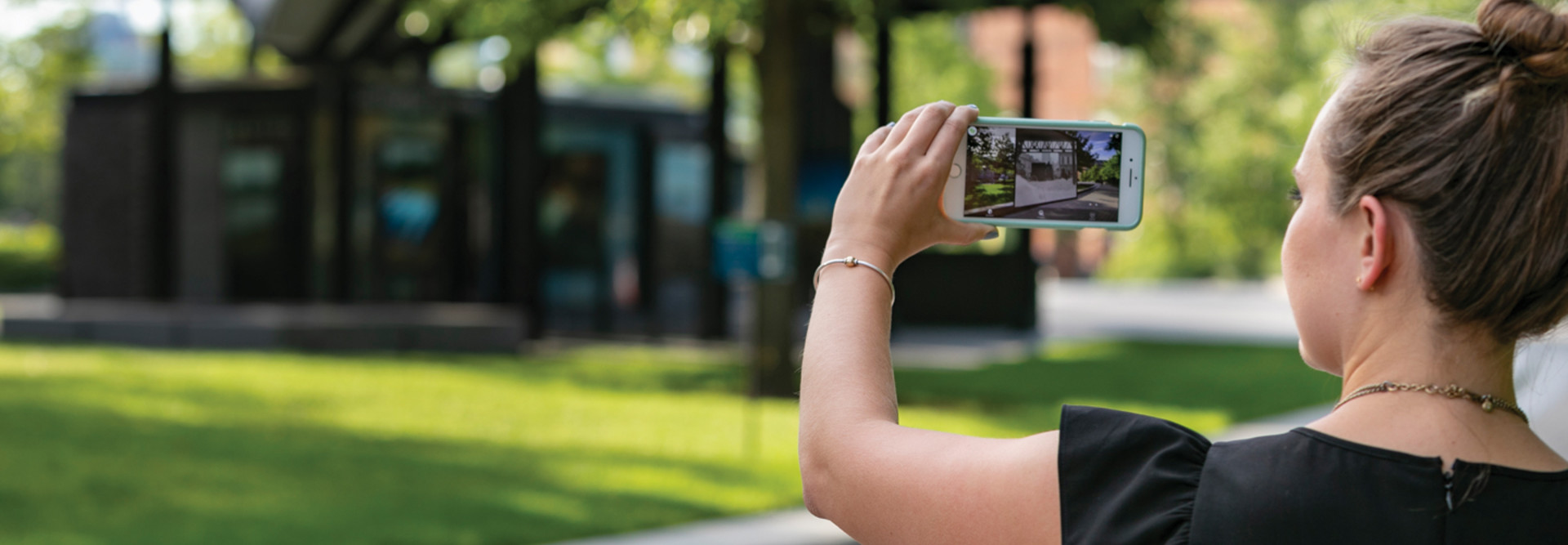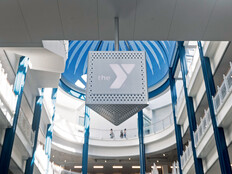Augmented Reality Brings Art and History to Life for Nonprofits
Point your smartphone or tablet at the Rose Fitzgerald Kennedy Greenway in Boston this summer, and you just might see a historical image floating in space, or find yourself walking through the shattered shards of a contemporary art piece.
These are two stations along the greenway’s augmented reality installation, which covers 1.5 miles and will run through the end of October. The installation is part of the Greenway’s 2019 public art exhibition, titled “The Auto Show,” featuring both loaned and commissioned works that, according to a press release, “explore the form of the automobile and the imaginative qualities of construction and movement through ideas of transportation.”
Augmented reality, which overlays digital imagery onto the real, physical world, is still new enough that it retains a bit of whimsy and novelty for most people, but the rise of smartphones has made the technology accessible to anyone who downloads an AR app.
Practical applications (such as apps that would show people how to put together a product when they point their phone at a pile of parts) have so far been limited in the consumer space, but museums and other organizations are increasingly taking advantage of AR to make their exhibitions more interactive and immersive.
The show’s AR component, developed in partnership with Boston Cyberarts, includes works by artists Nancy Baker Cahill, John Craig Freeman and Will Pappenheimer, and can be viewed by anyone who downloads the Hoverlay app and finds one of the 16 spinning cubes dotting the Greenway.
“Visitors will be able to engage with new ideas throughout a mile-and-a-half-long augmented reality experience,” Sheila Novak, public art project manager for the Rose Fitzgerald Kennedy Greenway Conservancy, tells CBS Boston. “It’s a treasure hunt, it’s a vision of the past and a vision of the future, all in one space.”
Other Exhibitions Take Advantage of AR Tech
Other museums and nonprofit organizations are using AR to spice up their exhibits. Last year, for instance, the nonprofit Lava Mae teamed up with the art and technology incubator ZERO1 for “Coming Home,” an AR installation in which San Franciscans experiencing homelessness told their stories.
At the installation, docents passed out iPad devices and headphones to visitors, who could then wander to eight different geolocations where video footage of the participants was played over the physical space.
Also in 2018, students from Northeastern University’s Toronto campus created four AR apps for nonprofit organizations in the city. One app, created for a nonprofit where Syrian refugees cook meals and then share the proceeds, introduced users to the people and ingredients behind the food. Another app, created for a nonprofit that inspires people to shop at Toronto’s corner stores, gave users access to Yelp reviews and interviews with owners of stores on Queen Street, a major thoroughfare in Toronto.
The Mauritshuis, an art museum in the Netherlands, teamed up with Google to build an AR app called Meet Vermeer. The app is, essentially, a digital museum that brings together all of Dutch painter Johannes Vermeer’s works — a feat that would be impractical in the physical world.
Emilie Gordenker, director of the Mauritshuis, tells The New York Times that she expects digital experiences, such as the Meet Vermeer app, to pique interest in physical art museums rather than replace them.
“The more information we share, including images, the more I think that people want to have the authentic experience of seeing the work in its home, and seeing it as an actual physical presence,” she says. “One of the reasons that museums have become increasingly relevant, and why attendance is going up, is that we’ve been able to harness these digital technologies. It breaks down barriers and makes what we have much more accessible.”










